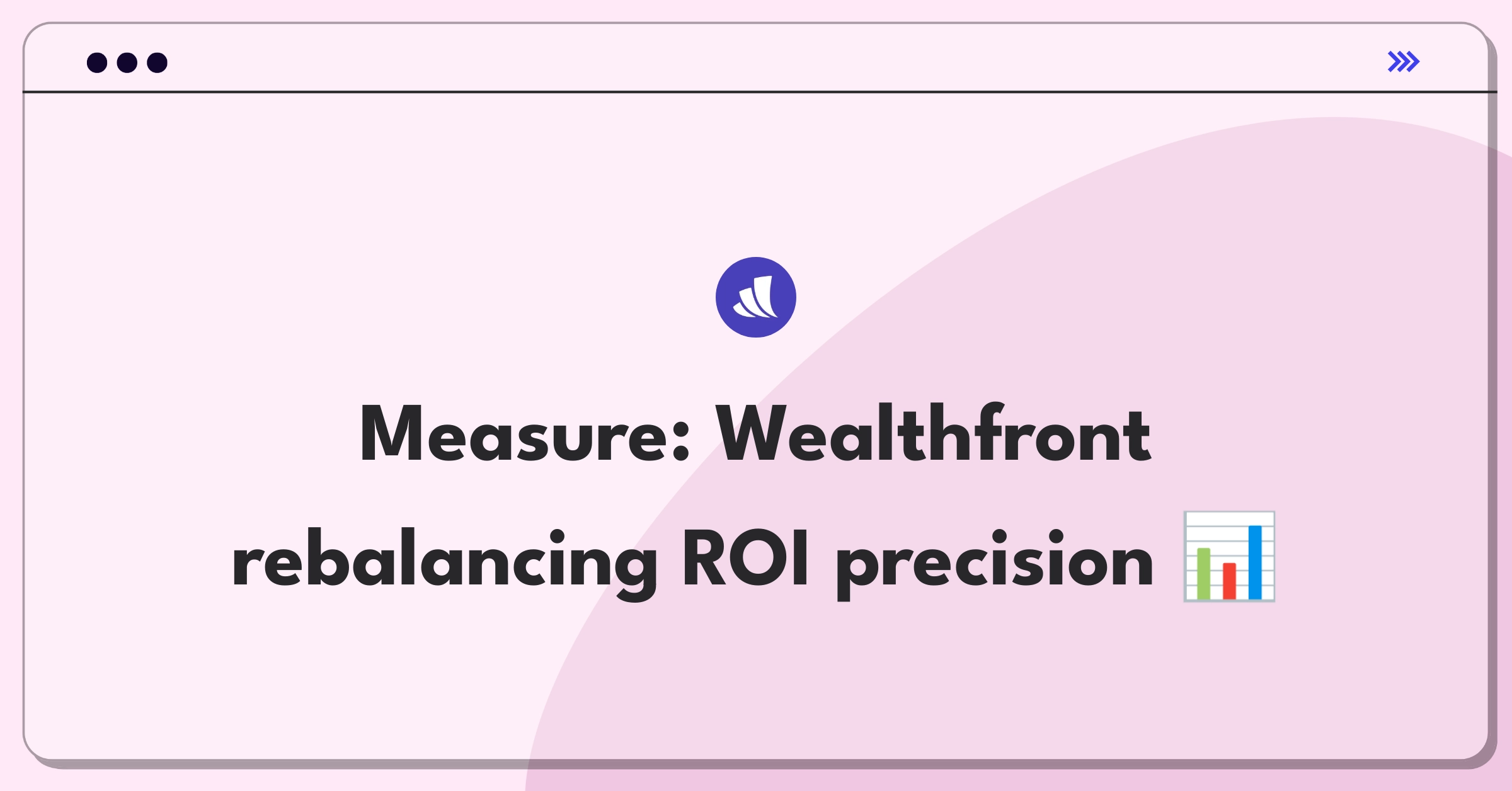Introduction
Evaluating Wealthfront's portfolio rebalancing feature requires a comprehensive approach to product success metrics. To address this challenge effectively, I'll follow a structured framework that covers core metrics, supporting indicators, and risk factors while considering all key stakeholders.
Framework Overview
I'll follow a simple success metrics framework covering product context, success metrics hierarchy.
Step 1
Product Context
Wealthfront's portfolio rebalancing feature is an automated investment management tool that maintains a target asset allocation by periodically buying and selling assets. Key stakeholders include:
- Investors (users): Seeking optimal returns with minimal effort
- Wealthfront: Aiming to differentiate its robo-advisory service
- Regulators: Ensuring compliance and investor protection
User flow:
- Initial portfolio setup: Users define investment goals and risk tolerance
- Ongoing monitoring: The system tracks portfolio drift
- Rebalancing execution: Automated trades to realign with target allocation
This feature is central to Wealthfront's value proposition of hands-off investing. Compared to competitors like Betterment or Personal Capital, Wealthfront's rebalancing may differ in frequency, thresholds, or tax considerations.
Product Lifecycle Stage: Mature - the feature is well-established but may require ongoing optimization and differentiation.
Subscribe to access the full answer
Monthly Plan
The perfect plan for PMs who are in the final leg of their interview preparation
$66.00 /month
- Access to 8,000+ PM Questions
- 10 AI resume reviews credits
- Access to company guides
- Basic email support
- Access to community Q&A
Yearly Plan
The ultimate plan for aspiring PMs, SPMs and those preparing for big-tech
- Everything in monthly plan
- Priority queue for AI resume review
- Monthly/Weekly newsletters
- Access to premium features
- Priority response to requested question


.png)